The Hyundai Great India Drive 2022 was crafted with the idea of traversing unexplored and challenging terrain. For this trip, we put the brand-new Hyundai Tucson to the test.
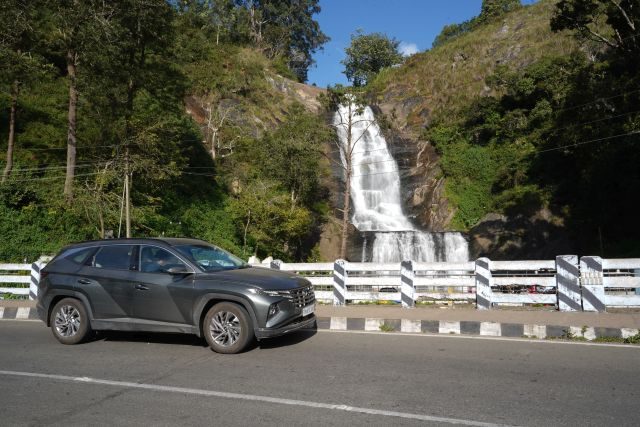
Story: Kurt Morris
Photography: Apurva Ambep
The Great India Drive’s 2022 edition was officially flagged off by Hyundai India in Srinagar. For the journey, now in its sixth iteration, we departed from Jammu and Kashmir’s summer capital and proceed to 17 destinations throughout the state in a fleet of Hyundai Tucson SUVs. The itinerary for this year included important locations like Sonamarg, Zoji La, and Kargil in Ladakh. The Great India Drive 2022 has been planned with the goal of conquering difficult terrain but that was just part one of the Drive for us this year, After exploring the North we wanted to go further and explore the vastness of India.
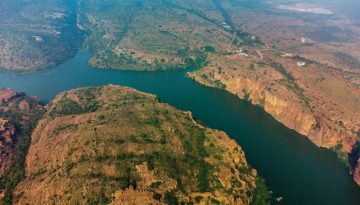
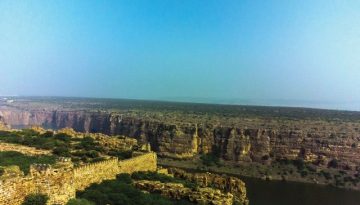
The Tucson, which is Hyundai’s top-of-the-line SUV, was our choice for this iteration of the Hyundai Great India Drive. It is powered by either a 186-hp, 2,0-litre, turbo- diesel engine or a 156-hp, 2.0-litre petrol engine. The petrol engine is coupled to a six-speed automatic transmission, whereas the diesel engine is paired with an eight-speed automatic, with the option of all-wheel drive as well. The Tucson that was provided to us was the HTRAC AT, an all-wheel-drive diesel model with the highest level of equipment.
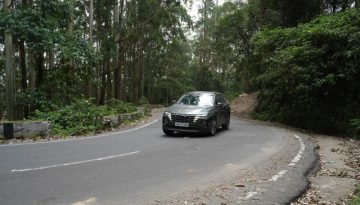
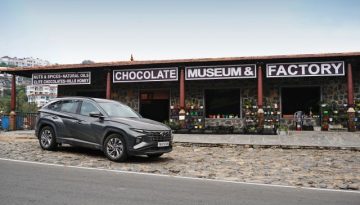
After braving the cold up north it was time for us to head down south, The journey from Pune to Kodaikanal via Bengaluru involved driving through the state of Maharashtra and the states of Karnataka and Tamil Nadu. From Pune, on the drive to Bengaluru, we travelled through the Western Ghats across the mountain range, known for its beautiful forests and waterfalls. We reached Bengaluru and After spending the night in Bengaluru, we continued our journey south to Kodaikanal, a hill-station located in Tamil Nadu. Kodaikanal is known for its stunning natural beauty, with lush forests, rolling hills, and picturesque lakes.
Some popular attractions in Kodaikanal include the Kodaikanal Lake, Bryant Park, and the Coakers Walk. The drive from Bengaluru to Kodaikanal involves travelling through the Palani Hills and the Western Ghats, offering more opportunities to enjoy the natural beauty of the region. The steep climb to this picturesque hill station was a breeze for Tucson thanks to its powerful 2.0-litre motor.
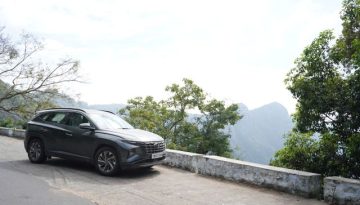
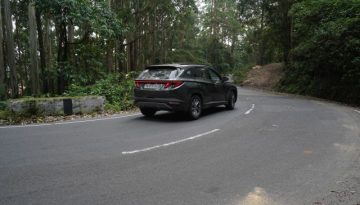
Kodaikanal is one of the most well-liked holiday spots in South India. Located in Tamil Nadu’s upper Palani Hills in the Western Ghats, it is 7,200 feet above sea level and close to Madurai. Kodaikanal is frequently referred to as the “Prince of Hill-stations” in popular culture. The abundant flora in Kodaikanal is well-known. The three main species of large trees are cypress, eucalyptus, and acacia. There are many pear trees, and the fruit is of excellent quality. This gorgeous city, whose name translates to “Gift of Forest,” lives up to its name with thick trees and greenery in every direction. Both conventional tourist attractions and off-the-beaten-path activities for the more discriminating or daring traveller can be found in Kodaikanal. Kodaikanal is a must-visit, being one of the South’s underappreciated hidden jewels.
We decide to explore some of the local hotspots in Kodaikanal, our first stop was the stunning Palani range of hills in Southern India, which is home to the Kodaikanal Observatory of the Indian Institute of Astrophysics. It was founded in 1899 as a Solar Physics Observatory, and all of the Madras Observatory’s operations were moved there. For visitors, the observatory has set up a well-known astronomy museum on the grounds; 400 metres separate it from the main entrance. A few telescope models support mostly graphical displays. Depending on the viewing conditions, a live solar image and the Fraunhofer spectrum can be seen here. One of the Observatory’s most prized items is the library. It has a wealth of astronomical books with substantial historical worth. The library keeps a sparse collection of recent works in solar and solar-terrestrial physics. One additional perk of visiting the observatory is that one can get an incredible vantage viewpoint of this lovely hill-station.
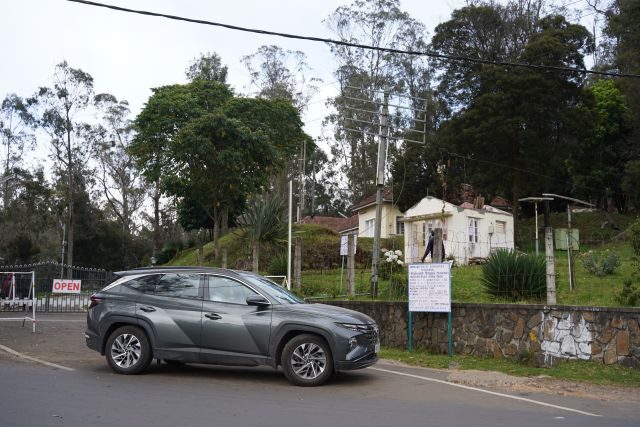
Our next story was about the Kodai Cheese factory, located in Kodai, Tamil Nadu, India. The factory is known for producing a variety of high-quality cheese products using traditional methods and locally sourced ingredients. Some of the types of cheese produced at Kodai Cheese include cheddar, gouda, mozzarella, and feta. These cheeses are made using milk from cows and goats, sourced from local farms in the surrounding areas. The cheese is made using natural fermentation processes and is aged for different periods of time to achieve the desired flavours and textures. In addition to producing cheese, Kodai Cheese also offers cheese-making classes and tours of the factory for visitors. These classes and tours give participants the opportunity to learn about the cheese-making process and see how the cheese is made firsthand.
Post our cheesy factory tour we decided to grab some local lunch at Mann Manam restaurants which offer a variety of cuisines together with the best services and aesthetically pleasing seating arrangements. A homely establishment with a garden terrace that serves traditional Indian food on banana leaves, one can have Tamil Nadu Biriyani, meals that come with the choice of mutton or chicken gravy.
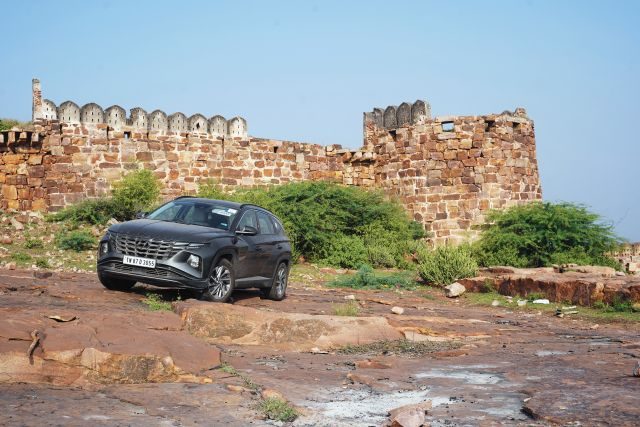
Soon, we had a craving for something sweet and headed to one of the top producers, suppliers, and wholesalers of premium mouthwatering chocolates: Kodai Chocolate Factory, based in Kodaikanal. Kodai Chocolate Factory produces a wide range of chocolates, including Butter Scotch, Rum and Raisins, Cashew Rich, Roasted Almond, Pista Crunchy, Mixed Fruit, and Strawberry Cream, to mention a few.
Having filled ourselves with some delicious local food we made our way to the Kodaikanal lake. Under the direction of Sir Vere Henry Levinge, the Collector of Madurai, the man-made lake in the form of a star was constructed in 1863 and has a depth of three metres. This lake, which is regarded as the “heart” of Kodaikanal, has long been a popular filming site for Bollywood productions. We took our time to relax and recharge there but, in no time at all, we had to set off for our next destination.
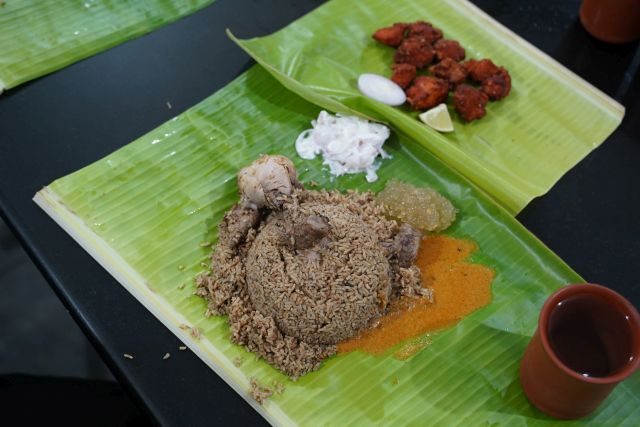
Europe may have the Stelvio Pass, regarded as one of the great driving roads but, in India, we have our very own Kolli Hills, our next stop. The Hills are renowned for their breathtaking scenery. The Agaya Gangai waterfalls are the most well-known sights in Kolli Hills. Because of the presence of an image known as “Kollippavai” on top of these hills, these mountains are also known in literature records as “Kolli Malai” or the “Mountains of Death.” This artwork was said to depict the ghost of a woman who lured travellers to their deaths with her beauty. The mountains stretch across about 280 square kilometres and reach heights of 1300 m. They are located 120 km from Trichy and 43 km from Namakkal.
We had to tackle the over 50-km-long mountain route’s nearly 70 continuous hairpin turns, steep ghat roads, and sharp bends in order to reach the top of Kolli Hills. It’s a real roller-coaster ride going uphill so it’s not for the weak-hearted. For many who experience motion sickness, it can even be a nightmare. For ardent drivers, however, this thrilling adventure may be a constant calling.
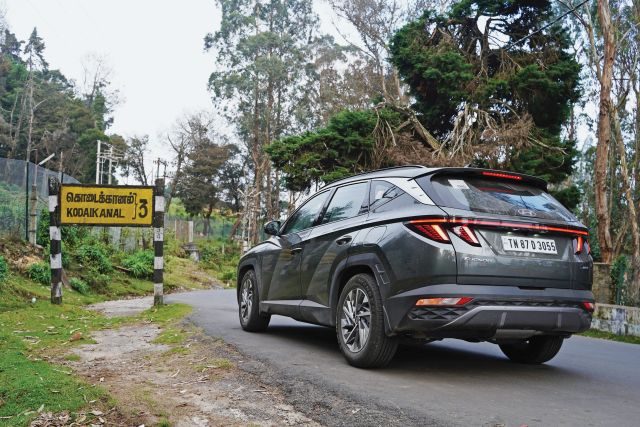
The Hyundai Tucson is a smart pick for a road-trip like this due to many factors in addition to its power. It is constructed with a monocoque frame and has a very well-balanced suspension system. It has a commanding driving stance and substantial ground clearance, yet the excellent suspension set-up lessens the body roll. When operating the Tucson, I found myself wanting to press the pedal even harder, especially when negotiating corners, where other SUVs prefer to slow down and take it easy. We really got to experience the sporty characteristics of this premium SUV.
With Kolli Hills conquered we headed to another hidden gem in India in Andhra Pradesh’s Kadapa district: the Gandikota hamlet, home to a magnificent canyon by the Pennar river. This natural formation, also known as Gandikota Canyon, is frequently compared to the Grand Canyon in Arizona, USA. A large fort that is surrounded by steep valleys, impassable hills, and stones makes for a fortress that is exceedingly safe. There is only one way to get to the fort. It appears to be a massive canyon since the Pennar flows alongside in the valley.
The pink granite of the Erramala Hills was cut over time by the Pennar, which also created Gandikota Canyon. What we see right now is an amazing natural formation. In Andhra Pradesh’s history, Gandikota Canyon has played a significant role. Everyone, from the Kakatiyas and Vijayanagara to the Qutub Shahis, was aware that they needed to control the vast canyon in order to administrate the kingdom more effectively. Consider the Gandikota Fort. Some of history’s most powerful and renowned kings once called the red sandstone fort with its eight-km wall home.
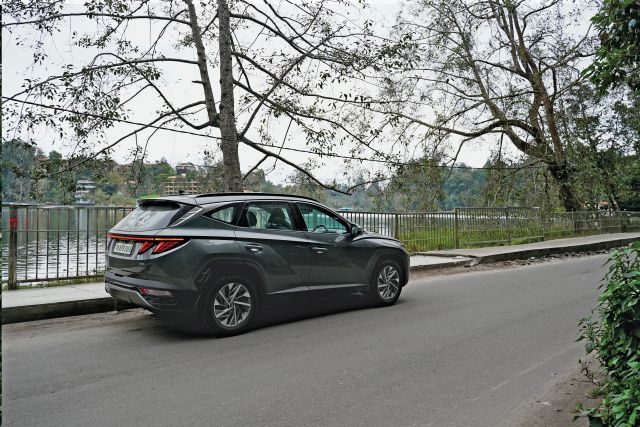
Standing to the edge of India’s Grand Canyon with the Tucson parked here made for a fitting end to an incredible trip and a great finish to this edition of the Hyundai Great India Drive that took us from the extreme cold at Kargil in the north to the cool hill-station of Kodaikanal in the south. The Tucson truly covered the length of India effortlessly. We have to add that even with all of that driving the Tucson kept us comfortable and after even driving all those sections, we never felt tired. Now this is the real testament to this versatile premium SUV.


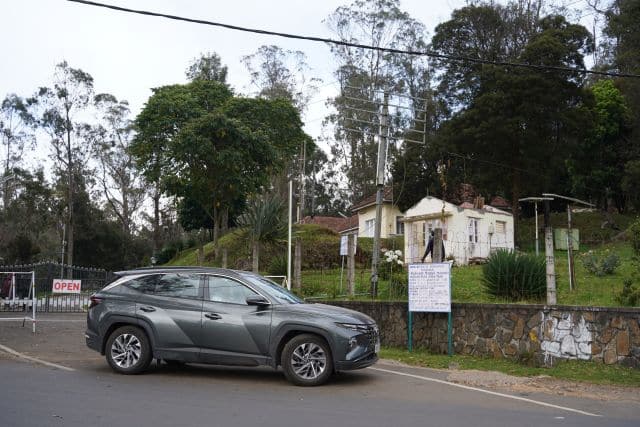

















Leave a Reply